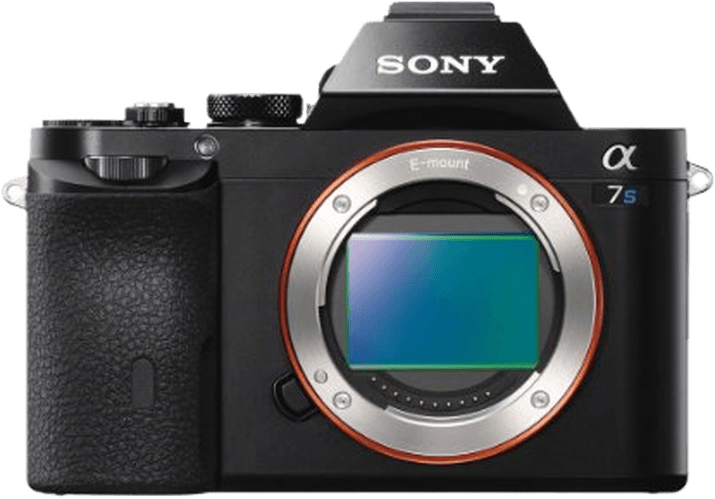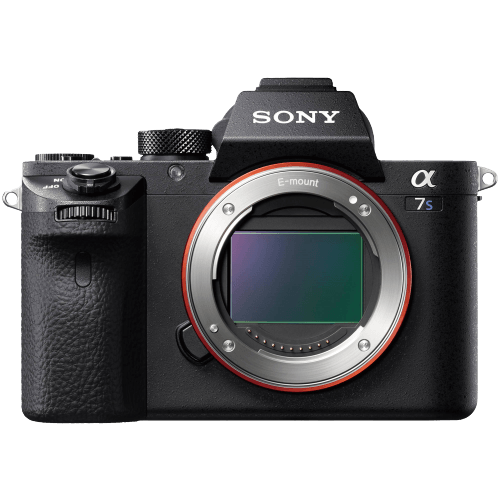Sony a7S vs a7S II Comparison
Sony a7S

Sony a7S II

The Sony a7S II emerges as the winner with a score of 60/100, while the Sony a7S trails behind at 55/100. Both cameras are mirrorless and were announced in 2014 and 2015, respectively. They share similar dimensions, with the a7S II being slightly larger at 127 x 96 x 60mm and heavier at 627g compared to the a7S at 127 x 94 x 48mm and 489g.
The a7S II outshines its predecessor with better features and performance, justifying its higher launch price of $3000 compared to the a7S’s $2499. On the other hand, the a7S has the advantage of being lighter and more compact, making it easier to carry around.
Taking all these factors into account, the Sony a7S II is the superior camera due to its enhanced features and performance. However, the Sony a7S remains a viable option for those seeking a lighter and more affordable alternative.
Sony a7S vs a7S II Overview and Optics
The Sony a7S II wins in the optics comparison with a score of 66/100, while the Sony a7S scores 60/100. Both cameras share several specifications, such as 12.2 megapixels, a shooting speed of 5, a CMOS sensor type, a Bionz X processor, a full-frame sensor size, and a Sony FE lens mount. However, there are differences that make the Sony a7S II a better choice in terms of optics.
The main advantage of the Sony a7S II is its image stabilization feature, which the Sony a7S lacks. Image stabilization is crucial for reducing camera shake and producing sharper images, especially in low-light situations or when using a telephoto lens. This feature makes the Sony a7S II more versatile and reliable for various shooting conditions.
On the other hand, the Sony a7S has a slightly higher DXOMARK score for the sensor, with 87 compared to the Sony a7S II’s 85. This means that the Sony a7S may produce marginally better image quality in certain situations. However, this small difference is not significant enough to outweigh the benefits of image stabilization in the Sony a7S II.
Considering these factors, the Sony a7S II is the better choice for photographers who prioritize image stabilization and versatility in various shooting conditions. The Sony a7S may still be an option for those who value a marginally higher sensor score, but the overall advantages of the Sony a7S II make it the superior camera in terms of optics.
Sony a7S vs a7S II Video Performance
The Sony a7S and Sony a7S II both have a video score of 56/100, indicating that their video capabilities are equally strong. They share several features, such as a maximum video frame rate of 60fps and no built-in time-lapse functionality. However, there are some differences between these two cameras that may make one more suitable for certain users.
The Sony a7S II has an advantage in terms of video resolution, as it can record 4K video at a maximum dimension of 3840 x 2160. This is a significant improvement over the Sony a7S, which can only record Full HD video at a maximum dimension of 1920 x 1080. The higher resolution offered by the a7S II allows for more detailed and sharper video footage, which is especially beneficial for professional videographers or those who want to create high-quality content.
On the other hand, the Sony a7S has a higher maximum video frame rate at 60fps, compared to the a7S II’s 30fps. This means that the a7S can capture smoother motion in its videos, which can be important for filming fast-moving subjects or creating slow-motion effects. However, this advantage is limited due to the lower resolution of the a7S’s video.
In comparing the video capabilities of the Sony a7S and Sony a7S II, it is clear that the a7S II’s 4K video resolution is a major advantage. While the a7S has a higher maximum frame rate, this benefit is diminished by its lower video resolution. Users who prioritize video quality and detail should consider the a7S II, while those who require smoother motion capture may find the a7S sufficient.
Sony a7S vs a7S II Features and Benefits
The Sony a7S II outperforms the Sony a7S in features with a score of 57/100, compared to the a7S’s 54/100. Both cameras share several specifications, such as a 3-inch screen size, no touchscreen, a flip screen, no GPS, WIFI, and no Bluetooth.
The a7S II excels with its screen resolution of 1,228,800 dots, significantly higher than the a7S’s 921,000 dots. This higher resolution provides a sharper and clearer image on the screen, allowing for more precise framing and focusing during shooting. The a7S II’s advantage in screen resolution contributes to its higher feature score.
On the other hand, the Sony a7S does not have any notable advantages over the a7S II in terms of features. Both cameras have the same screen size, lack of touchscreen, flip screen, and connectivity options. The a7S’s lower screen resolution is the main factor contributing to its lower feature score.
Taking these points into consideration, the Sony a7S II is the better camera in terms of features due to its higher screen resolution. The a7S does not offer any particular advantages over the a7S II, which makes the a7S II the preferred choice for those seeking a camera with better features.
Sony a7S vs a7S II Storage and Battery
The Sony a7S and Sony a7S II both score 21/100 in storage and battery, indicating no difference in this category. Both cameras have one memory card slot and accept SD, SDHC, and SDXC memory cards, as well as Memory Stick Duo, Pro Duo, and Pro-HG Duo cards.
The Sony a7S has a slight advantage in battery life, offering 380 shots compared to the a7S II’s 370 shots. Both cameras use the NP-FW50 battery type, and neither offers USB charging. Despite this advantage, the difference of 10 shots is not significant and may not impact the overall performance or user experience.
In this comparison, neither camera stands out as a clear winner in terms of storage and battery. Both cameras share the same specifications, with the a7S having a marginally better battery life. However, this small difference is unlikely to be a deciding factor when choosing between these two cameras.
Sony a7S vs a7S II Alternatives
Still not sure which camera to buy? Try these popular camera comparisons next:
